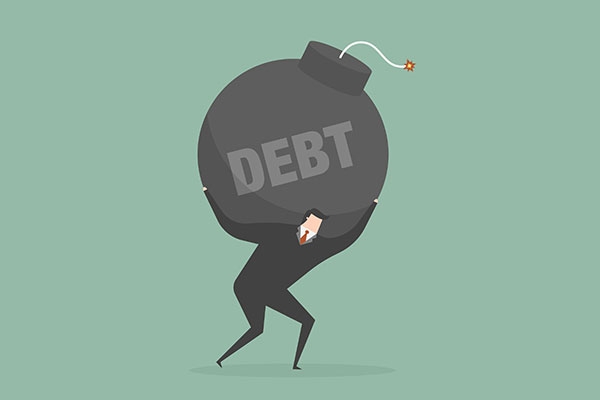Debt improvements illustrate efficiency
 |
| Debt improvements illustrate efficiency - illustration photo |
The government last week reported to the National Assembly (NA) that since 2016, the economy’s “debt safety norms have been closely controlled and stayed within the permissible limits approved by the NA. The public debt has reduced gradually on an annual basis, contributing to increasing the room for applying the fiscal policy.”
Specifically, the debt-to-GDP ratio decreased from 63.7 per cent in late 2016 to 55.2 per cent at the end of last year, while the government debt in GDP went down from 52.7 per cent in 2016 to 49.1 per cent by late 2020, and the foreign debt in GDP shrank from 49 per cent in 2017 to 47.2 per cent by late last year.
By 2025, the public debt is forecast to not exceed 60 per cent of GDP, while the government debt will not surpass 50 per cent of GDP. The safety limit will be 55 per cent of GDP for public debt, and 45 per cent of GDP for government debt.
Along with these reductions, the government also reported that the quality of public debt has also improved remarkably.
“Initiative has been taken in implementing solutions about restructuring public debt portfolios in a manner that domestic loans have been increased and foreign debts have been trimmed in order to reduce risks in exchange rates,” said the government report. “The term for the government bond issuance has been prolonged, with a remarkable reduction in interest rates. This has contributed to decreasing the costs of capital mobilisation for the state budget. Besides this, the structure of investors has continued being diversified.”
For example, last year, more than 270,000 government bonds were issued with an average term of 13 years, with a lending rate of only 2.95 per cent, which is very low, according to the Ministry of Finance (MoF).
Over the past few years, questions have been raised over how the government has worked on ensuring national public debt, amid rising worries about state budget overspending and shrunk revenues for the state coffers caused by numerous difficulties when a new government tenure has been taking place.
The MoF reported that the public debt expanded by 18.1 per cent in the 2011-2015 period, tripling the economic growth rate. However, such expansion dropped to 6.8 per cent in the 2016-2019 period, equivalent to the economic growth rate.
By late 2020 alone, the public debt accounted for 55.2 per cent of GDP. This rate, however, should have been reduced if there had been no big rise in state budget spending for supporting enterprises and fighting against the ongoing pandemic.
Last year, the Vietnamese economy suffered from a total state budget deficit of $11.87 billion, with the total budget expenditure was more than $77.39 billion, including the recurrent spending of $42 billion or 54.2 per cent. Policies on deferred tax payments and directly supporting businesses and the public have also amounted to tens of billions of US dollars.
For 2021, the government is set to borrow over $27.14 billion, which is made up of $22.93 billion from domestic sources and $4.21 billion from foreign lenders. Of this, about $25.2 billion will be used to balance the central budget while the remainder will be spent on lending. The government is expected to repay debts of around $17.15 billion in 2021.
Under Vietnam’s recently-approved public debt management programme for the 2021-2023 period, the total borrowing until 2023 will be $75.65 billion, of which $69.56 billion will go to the central budget. The local budget spending deficit is limited at 0.2 per cent of GDP, as stipulated in the 2015 Law on State Budget, and the debt repayment obligation of local governments is approximately $800 million.
With regards to foreign commercial loans by businesses and credit institutions, the growth rate for short-term credit is capped at 18-20 per cent, per year and the net maximum medium-term and long-term loans are around $6.35-7 billion per year.
According to The Economist’s Global Debt Clock, by late last week, Vietnam’s public debt in GDP stood at 45.6 per cent, and per capita public debt was $1,450, while total public debt was almost $94.85 billion.
The MoF reported that in the first half of this year, the state budget expenditure reached $30.2 billion, of which 72.14 per cent or $21.78 billion was recurrent spending. Other types of spending embraced development investment capital of $5.82 billion and interest payment of $2.47 billion.
Meanwhile, the total state budget revenue hit $33.69 billion. In which domestic revenue totalled $27.52 billion, revenue from crude oil exports stood at $804.34 million, and revenue export-import activities sat at $5.34 billion. Thus, there was a surplus in the state budget of $3.5 billion in the first half of this year.
What the stars mean:
★ Poor ★ ★ Promising ★★★ Good ★★★★ Very good ★★★★★ Exceptional
Related Contents
Latest News
More News
- Global gold exchange models offer roadmap for Vietnamese market (December 12, 2025 | 11:58)
- Five million household businesses to adopt self-declared tax system (December 11, 2025 | 18:13)
- Vietnam establishes management board for crypto asset trading market (December 11, 2025 | 18:11)
- ACB offers financing to fit Vietnam’s textile and garment industry (December 11, 2025 | 09:07)
- Vietnam accelerates push for open banking (December 10, 2025 | 11:58)
- Reshaping the country’s digital finance sector (December 09, 2025 | 21:12)
- VIB's Dual Earnings solution reshapes personal money management (December 09, 2025 | 10:06)
- Foreign funds accumulate consumer stocks in Vietnam (December 08, 2025 | 11:36)
- Listed companies honoured for information transparency (December 06, 2025 | 11:59)
- Citi appoints Minh Ngo as country officer and banking head for Vietnam (December 05, 2025 | 13:40)

 Tag:
Tag:






















 Mobile Version
Mobile Version